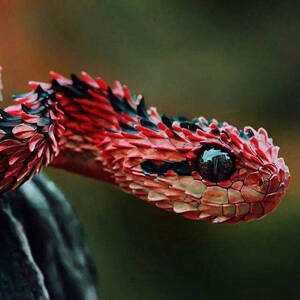The Dwarf Sea Snake
IUCN
LCBasic Information
Scientific classification
- name:The Dwarf Sea Snake
- Scientific Name:Hydrophiidea,The Dwarf Sea Snake,Gray sea snake
- Outline:Squamata
- Family:Elapidae S.snake
Vital signs
- length:About 120 cm
- Weight:No verification information
- lifetime:About 20 years
Feature
One of the three common sea snakes along the coast of China (blue-gray sea snake, blue-ringed sea snake, light-gray sea snake)
Distribution and Habitat
Distribution in China: Sea snakes are not common in the coastal areas of Qingdao. The most common species are the blue-gray sea snake, blue-ringed sea snake and light-gray sea snake of the family Ophiopodidae. They generally live near uninhabited islands near the coast. They are also common in the coastal areas of Guangdong.
Distribution abroad: Indian Ocean, from the South China Sea to the south to the coast of the Indoaustralian Archipelago, Australia (northern)
Appearance
The characteristics of the ventral and dorsal scales are similar to those of the light gray sea snake, but the dark ring pattern on the trunk reaches the center of the abdomen, forming a complete ring pattern. Viewed from the side, the dark ring pattern is narrower than the light-colored part in between.
Details
The Dwarf Sea Snake is a reptile of the genus Cobra in the family Elapidae.

The Dwarf Sea Snake will not actively attack humans, and will mostly hurt people when they are harassed.
The venom of the blue-gray sea snake is a neurotoxin similar to cobra venom, but it mainly harms human voluntary muscles rather than the nervous system. It bites people without pain, and its toxicity has a latent period. There are no obvious symptoms of poisoning within 30 minutes or even 3 hours after being bitten. However, this is very dangerous and can easily make people careless. In fact, its venom is absorbed very quickly by the human body. After poisoning, the first thing you feel is muscle weakness and soreness, drooping eyelids, and stiff jaws, which are a bit like the symptoms of tetanus. At the same time, the heart and kidneys will also be seriously damaged. People who are bitten may die within a few hours to a few days.
Although the toxicity of the blue-gray sea snake is terrifying, it also has natural enemies. Sea eagles and other carnivorous seabirds eat sea snakes. As soon as they see sea snakes swimming on the sea surface, they swoop down from the air at high speed, pick up one and fly away. Although sea snakes are ferocious, they have no offensive ability once they leave the water, and they are almost completely unable to defend themselves. In addition, some sharks also feed on sea snakes.
Blue-gray sea snakes are ovoviviparous. During the reproductive season, they will gather together to form a long snake formation stretching for dozens of kilometers. This is the large-scale gathering phenomenon of sea snakes during the reproductive season. Sometimes some ports will boil because of the sea snakes floating on the water.
Listed in the "List of Terrestrial Wildlife with Important Economic and Scientific Research Value Protected by the State" issued by the State Forestry Administration of China on August 1, 2000.
Listed in the 2013 IUCN Red List of Threatened Species ver3.1—Near Threatened (NT).
Listed in the China Biodiversity Red List—Vertebrate Volume, with an assessment level of Vulnerable (VU).
Listed in the second level of the China National Key Protected Wildlife List.
Protect wildlife and eliminate game.
Maintaining ecological balance is everyone's responsibility!








